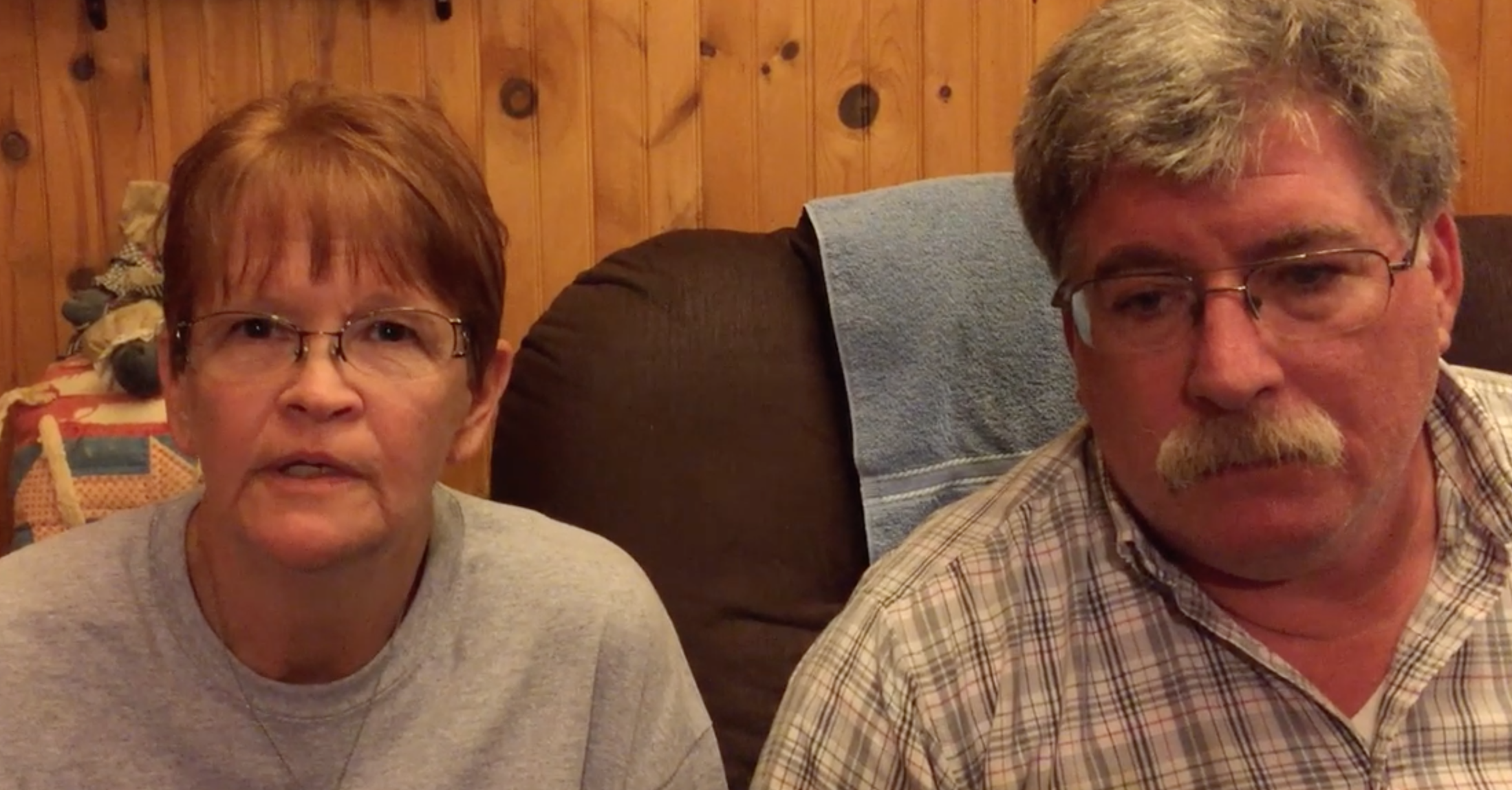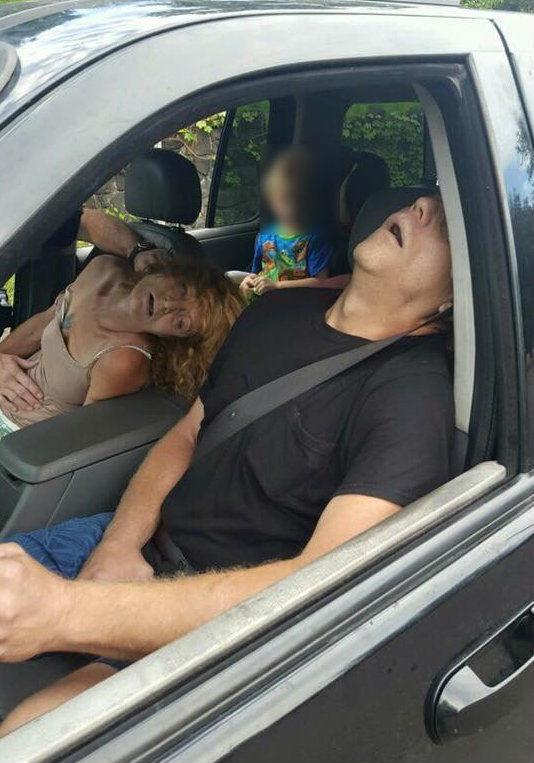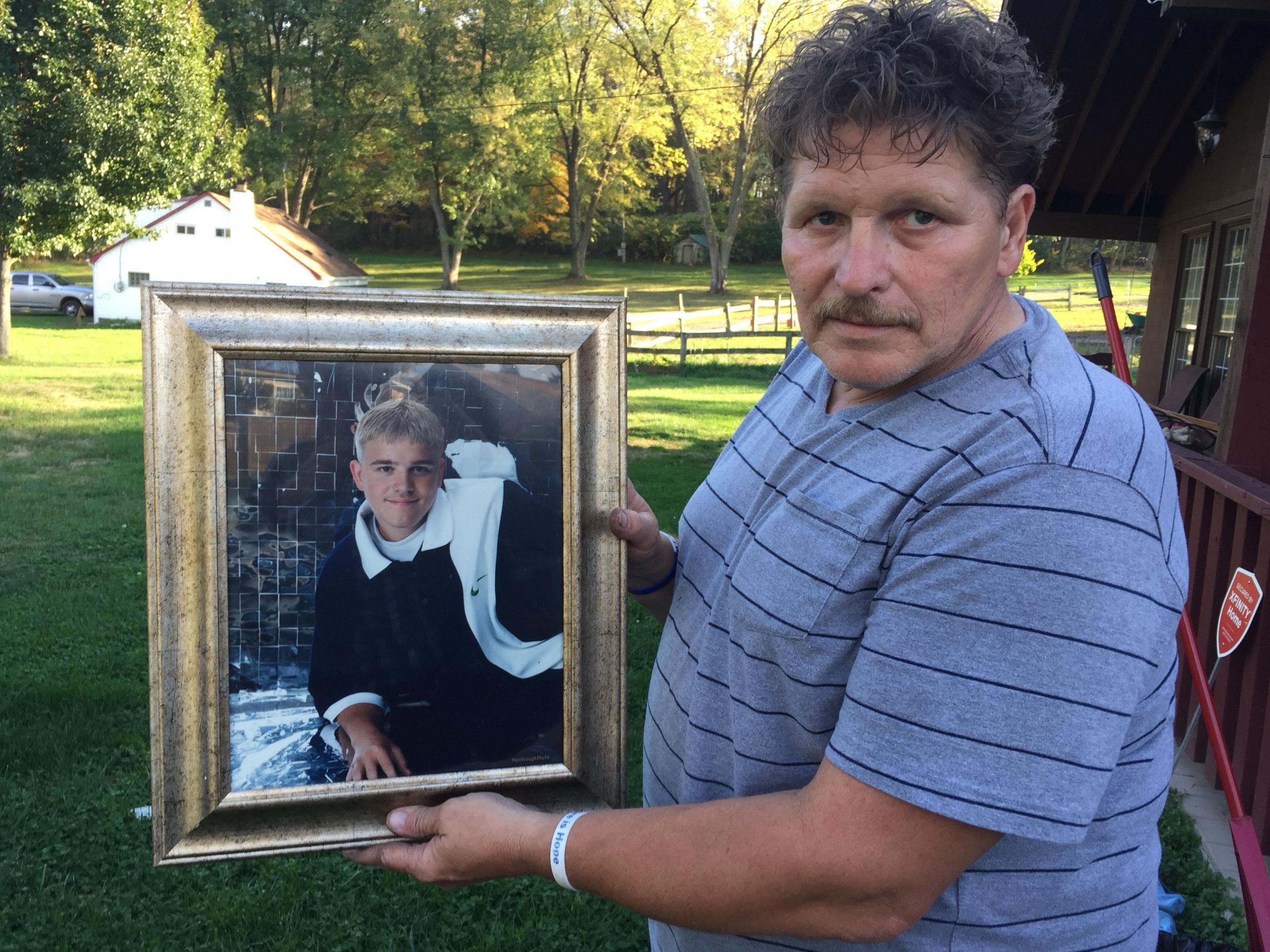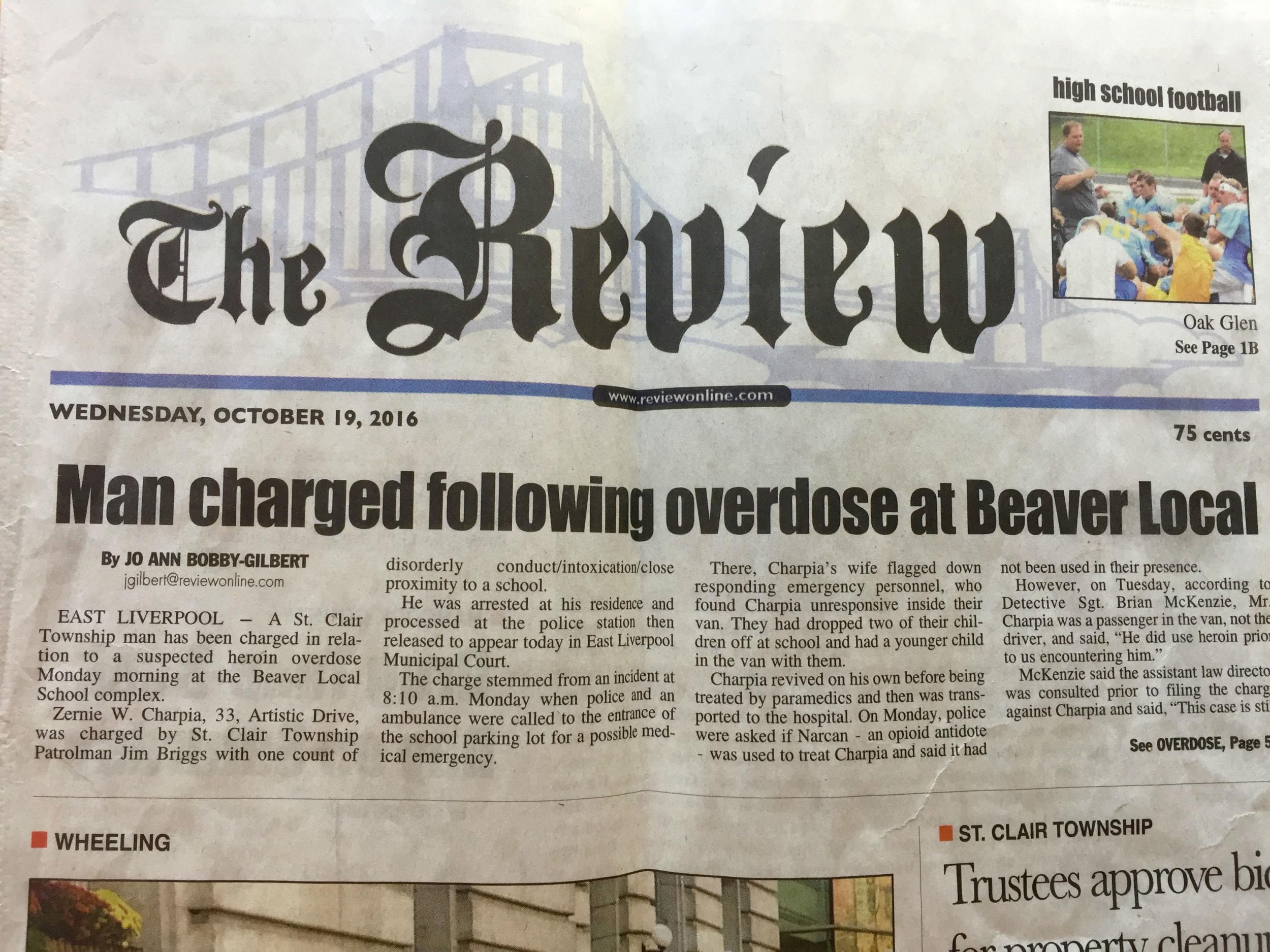Inside the US city plagued by the drug killing thousands – which neither presidential candidate is discussing
Across a vast swathe of the American heartland, thousands are dying and the presidential candidates barely mention the cause
Sean O’Connor had a real talent for music.
He never had formal lessons, but play him just about any song a couple of times, and he could perform it for you on his guitar.
Yet the young man also had a darker side. A fatal accident in which he was the driver and which left his best friend dead, set him on a downwards spiral that swerved through painkillers, jail time and eventually addiction to heroin.

Nothing could shake him from it. Not his partner, who was also an addict, his parents, or his son, Liam, who was born with a heroin dependancy. On 5 May last year, Sean was found dead from an overdose, lying at the bottom of a staircase in his home in Cleveland.
The 31-year-old one was one of 3,050 people killed by opiates in Ohio last year, an increase of at least 20 per cent on the previous year, as the state struggled to counter a menace from heroin that is cut with fentanyl and carfentanyl –superpotent additives that are used in treating cancer patients, or in the case of carfentanyl, tranquilising elephants.
Fentanyl is 40 times stronger than heroin; carfentanyl 100 times stronger. A single grain of the latter, no bigger than a speck of salt, is enough to kill someone with no resistance.
It is not just Ohio. Experts say the crisis is nothing less than an epidemic facing communities across the heartland of America; from Indiana to New Hampshire and Kentucky to West Virginia. The Centres for Disease Control and Prevention estimates that about half-a-million people died from overdoses between 2000 and 2014, a rate of about 80 a day, and a figure similar in scale to those who lost their lives to gun violence.
And yet while drug abuse received some coverage during the primary campaign, this most pressing of problems has been little mentioned by either Donald Trump or Hillary Clinton since they locked horns in the battle for the White House.

“It amazes me that this is not more at the forefront of discussions,” said Lt Brian McLaughlin, director of the Columbiana County Drug Task Force, which has the job of intercepting major dealers. “The fact is that this is going on and affects so many walks of life. It’s astronomical.”
Cindy and Ed Anderson, the parents of Sean O’Connor, said they had no idea he was involved with heroin until their grandson, now aged five, was born. It was only when the young woman went into labour that she confided to a nurse that she was an addict.
The couple said they knew nothing about the drug, and that day marked the beginning of stark, agonising self-education as they scrambled to learn more. Gradually they came to understand that an addict’s desire for heroin and their determination to secure it, was greater that almost everything.
“I’d say to him, ‘why can’t you stop’,” said Ms Anderson, sitting in the family home in Columbiana. “And of course, you can’t stop.”
The couple, who have established a campaign, Sean’s Bridge to Hope, to try and help others, said it was essential that people educated themselves about heroin. They said there was probably somebody within everyone’s circle struggling with it.
“The person we saw between 2010 and 2015 was not our son,” said Mr Anderson. “Now and then, you’d see a glimmer of the person he was before.”
The community of Columbiana is just 40 miles from the city of East Liverpool, once famed for its ceramics industry and its association with the British city of Stoke-on-Trent. Nowadays, this community of 11,000 people, set alongside the glassy waters of the Ohio River, sits on America’s frontlines in the struggle with heroin.
Earlier this year, police here found themselves in international headlines when they posted on Facebook a photograph of a couple overdosed in the front seat of a car. In the back seat was a four-year-old boy.
To anyone who did not know, it looked as though the couple were dead. As it was, they were revived by medics and subsequently charged with child endangerment.
The posting of the image was hugely controversial; some believed it was a way to highlight the scale of the problem facing American communities, while others believed the rights of the couple – and the child, whose face was not pixelated –had been trampled.
Police and city officials have defended their actions, saying they were fighting a battle in which the nature of the enemy was constantly changing. They felt the only way to draw attention to the crisis was to make use of the shock factor of such an image.
“Sometimes the truth hurts,” said Brian Allen, the city’s safety officer. “It meant people see the truth. There were these addicts, and there was a little boy in the back seat.”
He added: “It’s definitely an epidemic. It’s a crisis.”
Police chief John Lane said the incident was one of many that his team of 17 officers were routinely called to deal with. The previous day, officers had been called to the Beaver High School where a man had overdosed in the car park after dropping off his child for a school trip.
He said 75 per cent of the city’s residents survived off welfare payments and that poverty and addiction were frequently inter-generational. He said he often asked young children about their ambitions, expecting them to say they wanted to be an astronaut or a scientist. Instead, he said, they want to work in Walmart.
“Put a young person in that situation, and heroin is the way you don’t wake up hating your life,” said Mr Allen.
The officials said the presence of fentanyl and carfentanyl in the heroin they were seizing was forcing them to change the way they, and emergency medics, were working. Ambulance teams routinely carried Naloxone, sold under the brand name Narcan, as a nasal medication to bring around patients who had overdosed.

In the past, one shot was sufficient; nowadays, medics are having to administer five or six. “There was one incident last week. She had nine shots. They were slapping her to try and wake her up,” said Mr Lane. “Then she just snapped right around.”
He said the potentially lethal strength of the compounds meant his patrol officers also had to carry Narcan for themselves, in case they inhaled the drug. Because it could penetrate through their skin, they had to take extra precautions when dealing with suspected drugs.
The drugs make their way from either Cleveland, just two hours away, or Cincinnati, about five hours drive. Along the way, it gets more expensive: a gram of heroin in Cleveland sells for $65 (£53), but in East Liverpool it fetches $165.
Residents of East Liverpool say the drug problem has soared in the past five or six years. Almost everybody appears to know someone, either directly or one stage removed, who has had dependency problems with heroin, or else opiates in the form of painkillers such as OxyContin.
Mark Neville, an electrician, was buying coffee in a diner not far from the police station. He said he believed the presence of Narcan meant that addicts knew they could be brought back and were not forced to think about the risks.
“Just let them die, maybe, and then people would know,” he said, when asked for a solution to the problem.
Then, in almost the same breath, he revealed that his wife was the next day due to drive their 30-year-old nephew to the county jail, where he was to serve a term related to heroin offences. Did he want his nephew, who used to live with him, be allowed to die? “No, I don’t. He was fine when he lived with us,” he added. “But when he left, he got into trouble.”
Across the river, in West Virginia, the drug is in equal menace. Blaine McCartney, who lives in New Cumberland, said his family had been devastated by opiates, in one form or another. One son, Dale, who was 28, died in 2008 from a heroin overdose. Meanwhile, another son was in jail on heroin charges, as was one of his two daughters. His ex-wife, Tammy, died from heroin.
“There is no help. There are not enough clinics,” said Mr McCartney. “If you don’t have insurance, there is no way to pay for it.”

This crisis tearing apart small-town America received considerable coverage during the political primary season, particularly in places such as New Hampshire and Iowa. Yet Donald Trump and Hillary Clinton have not talked about it much since they became their parties’ candidates and they were not asked about the issue during their three debates.
Mr Trump has said drug addiction is a “tremendous problem”, and has vowed to tackle it as part of his promise to tighten border controls. While heroin previously came from south and south east Asia, since 2012 the vast majority has come from Mexico.
Ms Clinton has said heroin addiction is a “quiet epidemic”. She has proposed a $10bn (£8.2bn) plan that would give states money for localised anti-drug programmes, more diversion schemes and a plan to reform the prescription of opioids.
But those battling the impact of heroin in rural areas, or else those who have suffered directly, say more needs to be done, and now.
Ms Anderson, who lost her son Sean, said there was a need for more education in schools, greater access to rehabilitation facilities and an effort to eradicate the stigma of people talking about addiction.
She said there was also a need for more former addicts to step forward and share their stories.
“They can show that people can go on to lead productive lives,” she said, “because they have changed their lives around.”
Join our commenting forum
Join thought-provoking conversations, follow other Independent readers and see their replies
Comments